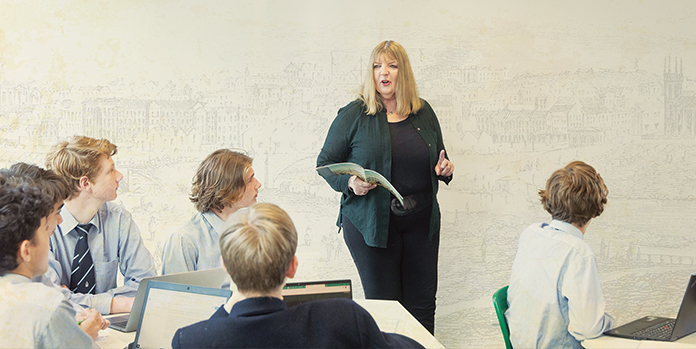Sometime between 27 and 9 BC, Livy wrote in his History of Rome “…in history you have a record of the infinite variety of human experience plainly set out for all to see: and in that record you find yourself and your country…”
The study of Australian History is an exploration of national identity, incorporating a greater understanding of our own personal identity, within the landscape of Australia and the world.
But it wasn’t always that way. As with all history, the key question is, who is setting it down? The answer to this question, in terms of Australia’s written history, is implicitly connected to the evolution of the country.
Up until the mid-20th century, the writing and teaching of Australian History had two major thematic strands:
- the European history of Australia starting with William Dampier’s first published journals in the 17th century, incorporating a distorted version of First Nations people; and
- the teaching by Indigenous people, through the visual and oral history, of the oldest continuous culture in the world, passed down over at least 65,000 years.
Australia’s history is exciting, complex and challenging, which is reflected in the chronological stages of published works. Who are the dominant voices and who are muted?
Certainly, the overt presentation of Australia’s written history, up until the middle of the 20th century, was controlled by white males, who dominated the intellectual and political spheres. The history of First Nations people, women and immigrants from non-European backgrounds, was presented through their lens. The true wonder of Indigenous history, for example, was not only ignored but it was deliberately viewed as irrelevant to Australia’s history.
The significance and exclusion of any other race in Australia in the 19th and 20th centuries was best understood by the 1880 header for the Bulletin published by J.F. Archibald and John Haynes, which articulated the White Australia Policy, ‘Australia for the Whiteman.’
Other voices were also lost in the early written recording of our history. Women of all races were relegated to footnotes of the male domain, in the history books and classrooms. However, there were a few powerful voices such as Louisa Lawson. The heading of her Journal published in May 1888 boldly declared, ‘The Dawn – A Journal for Australian Women.’ Even in the books that did mention her, she was relegated to the position of Henry Lawson’s mother for her role in Australian history.
Many voices in Australia’s history have been filtered echoes, if heard at all. From the second half of the 20th century, all voices started to resonate, as part of the exciting narrative of contemporary Australian society. Past perspectives are being revisited, debated and redefined.
Australian History is currently taught across Grimwade House, Wadhurst and Senior School. Our approach is one of inclusion. This is not about changing history. Rather, we hope, it reveals to students those aspects of our history which was hidden and suppressed in the past.
The new VCE Australian History Study Design, which will be implemented in 2022, is an exciting shift in the teaching and understanding of Australia at that level. The quintessential motivation behind the change was to ensure an exciting and interesting curriculum which would engage all students in the quest for a ‘true’ understanding of the breadth and depth of our history.
Why study Australian History? Whether this is our country of birth, or our adopted country, we are citizens of an amazing nation, where men and women have died to protect it and despite our different religions, races and political views, we have forged a free society and continue to do so.
About Adrea Fox
Adrea Fox is a Teacher of History in the Senior School, specialising in Australian History and is a noted historian in her own right. She was invited to join the VCAA panel to write the new VCE Australian History Study Design along with fellow teachers and academics.



